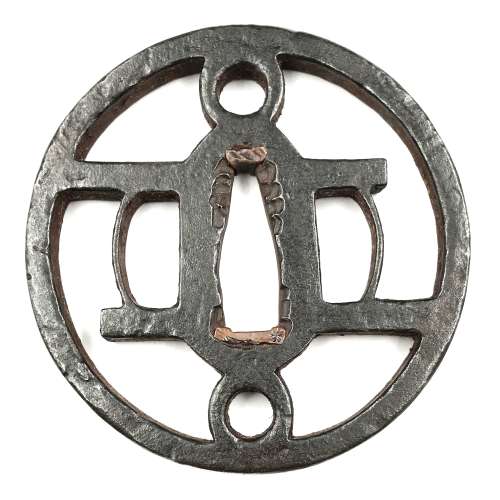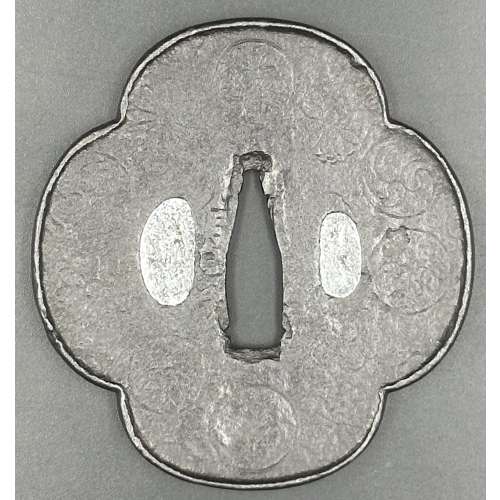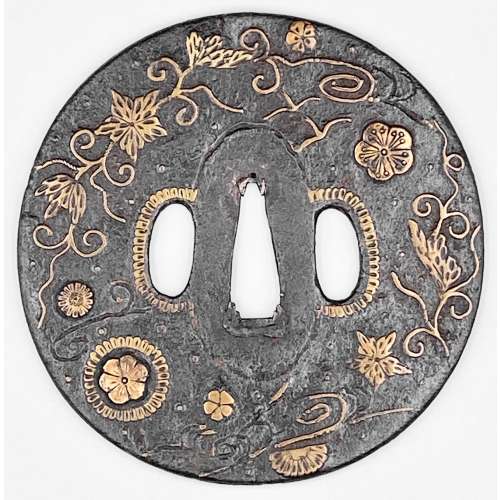Iron tsuba of round form with dam-shaped rim (dote-mimi) pierced with hitsu-ana and two udenuki-ana (probably cut later on) decorated in flat inlay (hira-zōgan) with vines and symbols of thunder or lightning (possibly - family crest, mon). Hitsu-ana and nakago-ana with copper sekigane.
Ōnin or Heianjō school, or, possibly Kaga or Umetada school. Momoyama period or earlier (Muromachi), 16th century. Unsigned.Size: 64.5 x 63.8 x 2.2 (center), 4.2 (rim) mm.
Provenance: Lundgren Collection: [Japanese sword-fittings and metalwork in the Lundgren Collection. Published by Otsuka Kogeisha Co., Ltd., Tokyo 1992], №31; The Lundgren Collection of Japanese Swords, Sword Fittings and A Group of Miochin School Metalwork. Christie's Auction: Tuesday, 18 November 1997, London. Sales "GOTO-5881". Christie's, 1997, №2. Lundgren's description at Christie's: Heianjo tsuba. Unsigned. The circular plate decorated in brass hirazogan with flowers, plants and symbols of thunder, dote mimi and udenuki ana, late Muromachi period (16th century). Tokyo 1992 description: Sword guard with design of flowering plants and frets in inlay. Unsigned. Heianjo inlay school. 6.35 x 6.3 cm, thickness of rim 0.40 cm. Iron. Flat brass inlay. Muromachi-Momoyama Period, 16th century. Provenance: The Second John Harding. A somewhat look-a-like pieces can be found in various catalogues. The one in Naunton Collection, №172, is signed: Umetada of Yamashiro: "Iron, small, almost circular, with raised oval rim, inlaid all over with leaves and scrolls in brass hirazōgan."



















 English translation of the book indicated above Nihon Tō Kōza, Volume VI, Part 1 by Harry Afu Watson, AFU Research Enterprises, Inc., 1993. Tsuba in question illustrated on page 14 and described as follows: " Tsuba mumei Ōnin. Tetsu ji maru gata ko-sukashi tsuchime shitate shinchū suemon ten zogan maru mimi. Brass suemon". My question remains: why such a text is called 'translation' while it looks more like transliteration of romanization?
English translation of the book indicated above Nihon Tō Kōza, Volume VI, Part 1 by Harry Afu Watson, AFU Research Enterprises, Inc., 1993. Tsuba in question illustrated on page 14 and described as follows: " Tsuba mumei Ōnin. Tetsu ji maru gata ko-sukashi tsuchime shitate shinchū suemon ten zogan maru mimi. Brass suemon". My question remains: why such a text is called 'translation' while it looks more like transliteration of romanization? 

